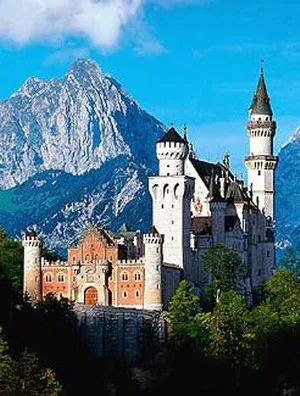
Neuschwanstein Castle
Neuschwanstein Castle (German: Schloss Neuschwanstein, lit. New Swan Stone palace) is a 19th-century Bavarian palace situated on a rugged hill near Hohenschwangau and Füssen in southwest Bavaria. The palace was commissioned by King Ludwig II of Bavaria as a retreat and as homage to Richard Wagner, to whom he wrote on May 13, 1868: “The location is the most beautiful one could find, holy and unapproachable, a worthy temple for the divine friend who has brought salvation and true blessing to the world.”
The palace comprises a gatehouse, a tower, the Knight's House that has a square tower, and a great hall with two towers at the Western end. The overall effect is highly theatrical as the king took a keen personal interest in the design and decoration: he ordered to decorate Neuschwanstein with scenes from medieval legends and poetry, including the legend of the swan knight Lohengrin.
The reclusive King Ludwig did not allow visitors to his castles, which he intended as personal refuges. However, after his death in 1886, the castle was opened to the public (in part due to the need to pay off the debts Ludwig incurred financing its construction).
Today, Neuschwanstein is one of the most popular castles in Europe. Every year 1.3 million people visit "the castle of the fairy-tale king".